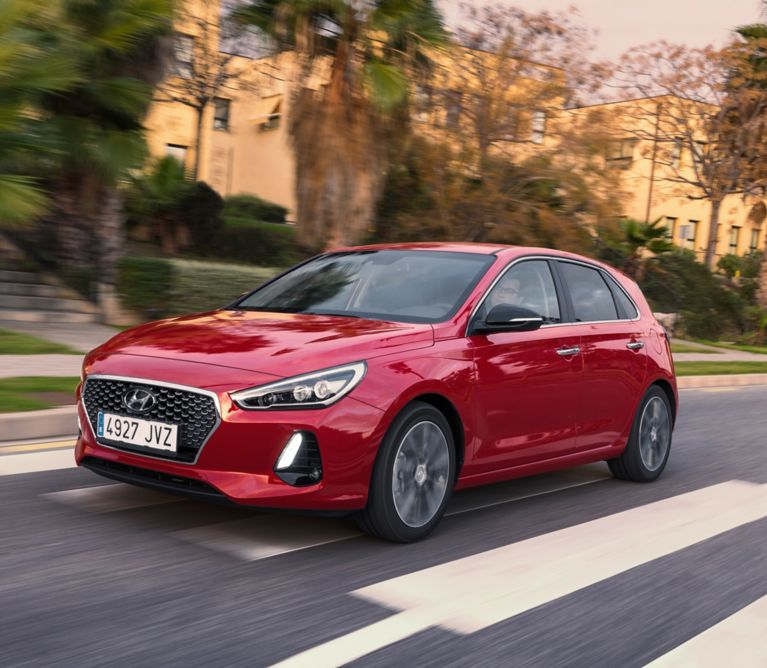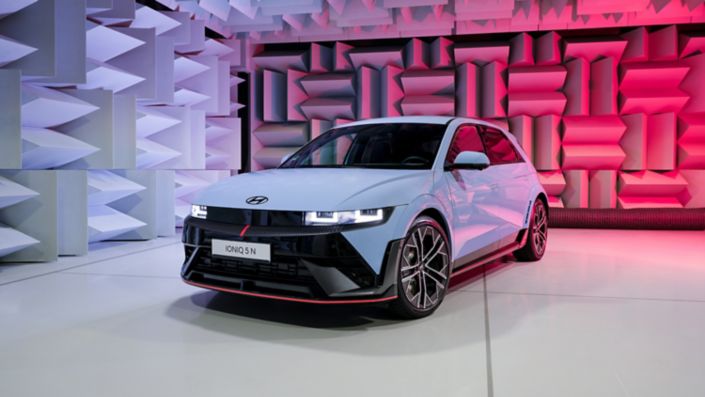What was your concept for developing the powertrains for the New Generation i30?
For the i30 powertrains, Hyundai’s downsizing strategy has been applied, offering small displacement downsized turbo-charged engines like the new 1.4 T-GDi to offer high responsiveness and lower consumption to our customers.
To celebrate the New Generation Hyundai i30 we met Dr Michael Winkler, Head of Powertrain at Hyundai Motor Europe Technical Center, to discuss the New Generation i30’s powertrain lineup.
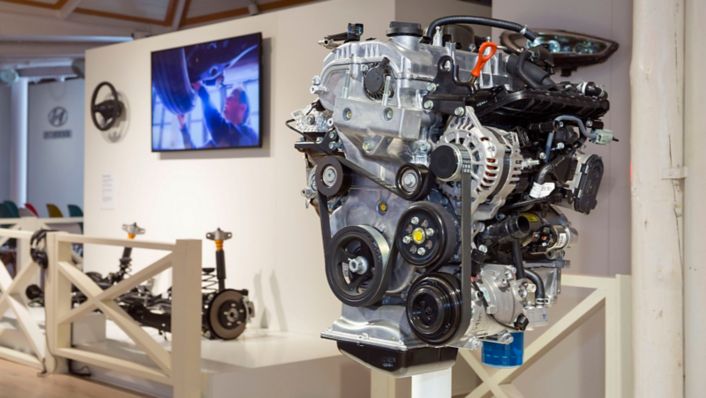
Could you describe the New Generation i30’s powertrain line-up?
First of all, the brand new engine is the 1.4 T-GDi, which has direct injection, integrated exhaust manifold in the cylinder head and a single scroll turbocharger. It has a maximum power of 140 PS (Fuel consumption combined: 5.5 - 4.8 l/100 km; urban: 6.6 - 5.9 l/100 km; extra-urban: 5.0 - 4.1 l/100 km; CO2 emissions combined: 125 - 109 g/km) and delivers maximum torque of 242 Nm from 1500 rpm. As well as the 1.4 T-GDi, we offer the compact 1.0 T-GDi engine (Fuel consumption combined: 5.0 - 4.5 l/100 km; urban: 5.8 - 5.4 l/100 km; extra-urban: 4.6 - 4.0 l/100 km; CO2 emissions combined: 115 - 103 g/km), which is also a turbocharged gasoline engine. This was featured for the first time in the i20. It has a maximum power of 120 PS, and delivers 171 Nm of torque, also from 1500 rpm. So we have the two gasoline turbocharged downsizing engines, and we also offer the 1.6 litre diesel engine with three power outputs: 95 (Fuel consumption combined: 3.8 - 3.6 l/100 km; urban: 4.1 – 4.0 l/100 km; extra-urban: 3.6 - 3.5 l/100 km; CO2 emissions combined: 98 - 95 g/km), 110 (Fuel consumption combined: 4.1 - 3.4 l/100 km; urban: 4.4 – 3.8 l/100 km; extra-urban: 3.9 - 3.2 l/100 km; CO2 emissions combined: 109 - 89 g/km) and 136 (Fuel consumption combined: 4.1 - 3.8 l/100 km; urban: 4.4 - 4.2 l/100 km; extra-urban: 3.9 - 3.6 l/100 km; CO2 emissions combined: 109 - 99 g/km) PS.
What does the New Generation i30 offer in terms of driving performance?
Well, I think the driving performance with the 1.4 T-GDi is quite amazing, so you can take it by numbers with the acceleration from 0-100 km/h, or even more importantly, I think, the elasticity from 80-120 km/h. So, the elasticity is 8.7 seconds, and even with the seven-speed dual clutch transmission that has been much improved, down to 6.5. I think especially the 1.4 T-GDi in combination with the seven-speed DCT is an attractive and quite sporty powertrain combination with low CO2 emissions.
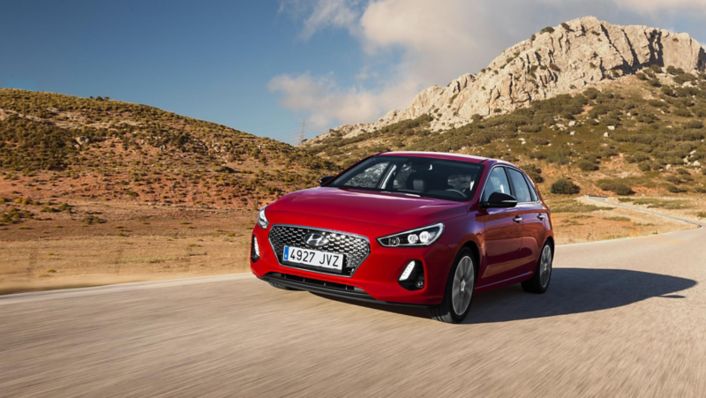
What are your personal highlights of the New Generation i30?
As I said, I really enjoy the 1.4-litre turbo engine with the seven-speed DCT. It is a combination of being a pleasure to drive and is attractive thanks to its low CO2 emissions. If you focus more on the fuel economy, I would go to the diesel, especially the 110 horsepower variant, which is really attractive in terms of CO2 going down to 89 grams per kilometre (with a fuel economy pack based on the NEDC test cycle).
Is there anything in particular about the 1.4-litre T-GDi that marks it out from other engines?
Well, it follows Hyundai’s downsizing strategy. We started very successfully with the 1.0-litre three-cylinder engine with 120 horsepower, this does not cover the full driving range we need as a powertrain for the i30, so it is very natural to bring a really fuel efficient but still dynamic variant with 1.4-litre. It also comes from our Kappa engine family as with the 1.0-litre and is an engine that uses state-of-the-art technology, such as an aluminium block and head, direct injection with six-hole laser drilled injectors with a fuel pressure up to 200 bar.
It also has an integrated exhaust manifold in the cylinder head, which doesn’t only make the engine very compact, but also it is very efficient in terms of warming up the engine and being fuel efficient. The single scroll turbocharger is equipped with an electrical wastegate actuator, which is very precise and accurate in determining valve pressure.
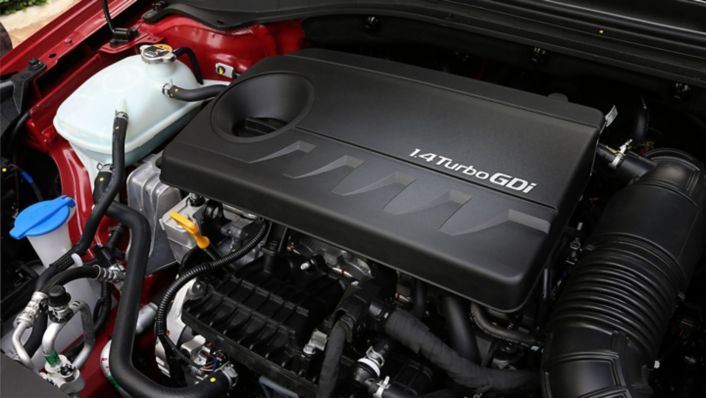
The engine is significantly lighter compared to its predecessor, the Gamma 1.6-litre. How did your team achieve this?
The engine is 15kg lighter than the 1.6-litre engine. Rather than individual items that have been tweaked, we have changed the whole engine. One of the key items is the cylinder to cylinder distance. On the Gamma engine it was 85mm, and it is now down to 78.5mm, which makes the engine much more compact. So we could significantly reduce the weight of block as well as head compared to the Gamma engine. Apart from this, other items like the conrod and crankshaft were also optimised in terms of weight. Thus the main change comes from changing the pitch, making the engine more compact and thus notably lighter.
Finally, what in your view makes the New Generation i30 a car for everyone?
That’s a good question! I think it’s not only the powertrain. Of course, I’m a powertrain guy, so my heart goes to the 1.4-litre engine and DCT, but I think the overall car is an attractive package. It’s really grown up, it has a good design, it’s well engineered and it has a really nice and sophisticated interior. It is a really safe vehicle and the connectivity is also an item which is good for everyone. If I go back to the powertrain, it also offers a powertrain for everyone: a very fuel-efficient powertrain with the diesel engine, or a more sporty powertrain with the 1.4 T-GDi.
Consumption Data*
Gasoline Engines
1.4 MPI (100 PS): Fuel consumption combined: 5.6 - 5.4 l/100 km; urban: 6.8 - 6.6 l/100 km; extra-urban: 4.9 - 4.8 l/100 km; CO2 emissions combined: 130 - 126 g/km
1.0 T-GDi (120 PS): Fuel consumption combined: 5.0 - 4.5 l/100 km; urban: 5.8 - 5.4 l/100 km; extra-urban: 4.6 - 4.0 l/100 km; CO2 emissions combined: 115 - 103 g/km
1.4 T-GDi (140 PS): Fuel consumption combined: 5.5 - 4.8 l/100 km; urban: 6.6 - 5.9 l/100 km; extra-urban: 5.0 - 4.1 l/100 km; CO2 emissions combined: 125 - 109 g/km
Diesel Engines
1.6 CRDi (95 PS): Fuel consumption combined: 3.8 - 3.6 l/100 km; urban: 4.1 – 4.0 l/100 km; extra-urban: 3.6 - 3.5 l/100 km; CO2 emissions combined: 98 - 95 g/km
1.6 CRDi (110 PS): Fuel consumption combined: 4.1 - 3.4 l/100 km; urban: 4.4 – 3.8 l/100 km; extra-urban: 3.9 - 3.2 l/100 km; CO2 emissions combined: 109 - 89 g/km
1.6 CRDi (136 PS): Fuel consumption combined: 4.1 - 3.8 l/100 km; urban: 4.4 - 4.2 l/100 km; extra-urban: 3.9 - 3.6 l/100 km; CO2 emissions combined: 109 - 99 g/km
*Depending on trim and tire specifications.

